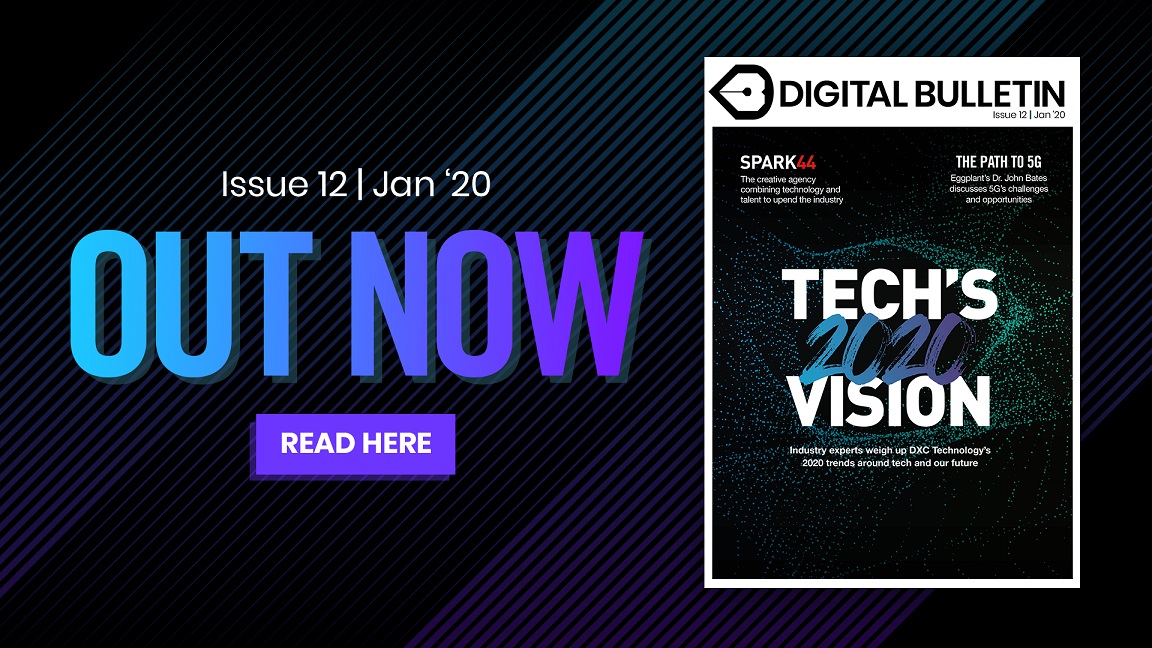
After a number of years of planning and development – and no little hype – the roll-out of 5G is upon us. The fanfare is not unwarranted; previous upgrades spanning from GPRS-powered 2G through to LTE-Advanced 4G+ have been impressive, no doubt. But the jump that is about to be made is seismic by comparison.
It is important to remember that this is a development driven primarily by enterprise. To truly take advantage of technologies such as AI, machine learning, IoT and many others, business has long known it needed a better standard of connectivity. It required a solution that had far less latency and would never drop out. Against this backdrop, technologies such as commercial drones and autonomous vehicles – unthinkable just a decade ago – will become a reality.
By the end of 2025, Ericsson forecasts 5G to have 2.6 billion subscriptions covering up to 65 percent of the world’s population and generating 45% of the world’s total mobile data traffic, making it the fastest developing mobile communication technology to have ever been rolled out on a global scale.
Currently, it would be fair to say that 5G isn’t even at early adopter stage, and to reach those heady heights 5G will likely need a number of applications that catch the imagination of both the business and consumer worlds.
Speaking to Digital Bulletin, Dr. John Bates, CEO of global software testing and monitoring company Eggplant, says he believes the real game changing application from a business perspective with be augmented reality (AR), with the healthcare, defence and commerce sectors all in a position to benefit.
“If you’ve got augmented reality delivered to a device, it can bring together the bricks and mortar and the digital mobile world of commerce. So as somebody walks around, they’ve got AI that is authorised to know them that is connected to the cloud, and it is learning more about them all the time,” he says.

“Take the example of somebody walking around London: the user will be getting fed real-time information about the best way to get around, which will know about congestion, delays and strikes. It will understand what kind of products they might want to buy, or where their friends are to meet for a coffee.
“It is that awareness of overlaying multi-dimensions onto the screen that is relevant to you in your location in real-time and doing it in a peer-to-peer way. That experience relies on enriched data, so we have to get those applications ready to go. I also think that the experience will ultimately be delivered through headsets or glasses far more than on mobile.”
The lack of latency and rapid speeds are two of 5G’s crucial selling points and pave the way for technologies that would once have been the stuff of sci-fi legend. Bates, a computer scientist, says that some of the advances we are seeing in the mobility space in particular simply wouldn’t have been possible without this advancement.
“A real driver of 5G is going to be autonomous transport and commercial drones,” he comments. “If we really want to have safe and secure self-driving cars and drone networks then we need to have the ability for them to communicate a lot of multi-dimensional data peer-to-peer, as well as to the cloud, all of the time, because they need to be missing each other, they need to be aware of what is going on, they are avoiding traffic jams.
“It is that multi-dimensional awareness data and real-time video streams coming from them that is important. They might be processing not just their own video and data but that of other vehicles as well, so that absence of latency is absolutely crucial.”
A reliable and rapid connection is also likely to accelerate the trend of ‘everything-as-a-service’, with companies utilising 5G to access services and applications on demand over the Internet as opposed to utilising on-prem facilities. It represents a real challenge to some of the industry’s biggest names who derive significant revenues from packages of services that could soon seem antiquated.
“We have to move away from the thought of these monolithic services, so we think of these independent vendors, whether its Salesforce for CRM or Workday for HR automation. I think it is going to be more about micro-service, where you can put together several different services collaborating to customise the world you want,” Bates predicts.
“Let’s say you own a small business where there is a lot of mobility involved, you might want to pick a number of best-of-breed, so one for payroll, one for HR, and one for your accounting system and compose them and suddenly you’ve got a customised workflow with everything-as-a-service that has been picked and joining them together in a customised way. That is a real opportunity.
“On one side, you’re going to have the mega vendors, the SAPs, the Oracles of this world that will want you to get it all from them, but why should you when this cloud-based world is so composable, why should you go for something that might be legacy when you can do it all in a custom way?”
As with any technology that promises to shake up not just industry, but the entire world, 5G poses a number of challenges, and will put huge pressure on workloads due to such an expansion in bandwidth, meaning back-end systems will need to be primed for increased pressure.
“Companies are going to have to massively over proposition because they’re going to have much more load, whether that’s one service talking to another or actual user streams, so that’s going to have a knock-on effect. As 5G networks come in, we’re going to have to massively expand our back-end cloud capabilities, do load and perform testing and much better user experience testing to make sure everything is working,” Bates states.
“I’m not convinced that the cloud hyperscalers have everything in place, and they probably think they can just wing it. They are running at such scale that I’m sure they have an idea about how quickly they want to scale up, but can they do so if this really takes off gangbusters? I think it is something they should be looking into, but I imagine it is very difficult for them to assess the timing of.”
Without trying to slip into hyperbole, it does seem as if we are on the cusp of a technological change that could be truly transformative, for consumers and businesses. And it is true to say that the usual names in technology stand to gain a great deal.
But, says Bates, nobody has quite managed to corner this new frontier yet, leaving the door ajar for a new pretender to storm in and take on the elite. If a company, or group of companies, could do that, it could change the face of the technology market as we know it.
“I do think 5G could change the game because Amazon was born in the wired internet era and hasn’t really yet fully taken advantage of this low latency, high velocity, truly wireless opportunity,” he concludes.
“Somebody is going to, whether that’s a real old school legacy company leapfrogging ahead, or a new company, or it could be Amazon, but somebody is going to change the way things work. Google hasn’t yet, and it was born in the wired internet era as well, so while it owns the world of interest-based advertising through key words and so on, it doesn’t yet own the location-aware mobile world.
“5G is going to provide the platform for somebody to do that, who is going to do that in this AI driven, mobile world? Google and Amazon have legs up here but because it is the convergence of the real world and virtual world, other people have an opportunity, so it will be about who has the freedom of thinking to own it.”



